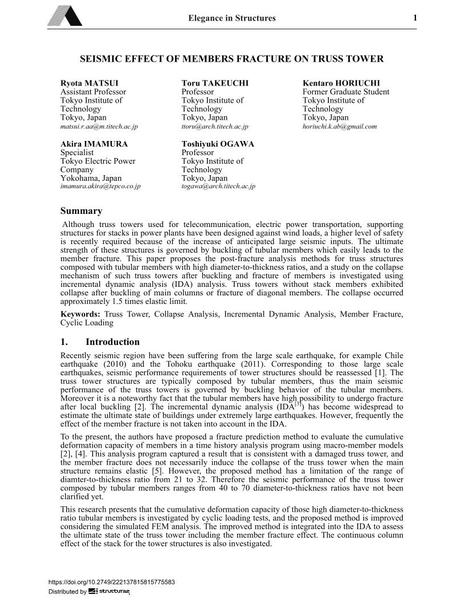Seismic Effect Of Members Fracture On Truss Tower

|
|
|||||||||||
Détails bibliographiques
| Auteur(s): |
Ryota Matsui
Toru Takeuchi Kentaro Horiuchi Akira Imamura Toshiyuki Ogawa |
||||
|---|---|---|---|---|---|
| Médium: | papier de conférence | ||||
| Langue(s): | anglais | ||||
| Conférence: | IABSE Conference: Elegance in structures, Nara, Japan, 13-15 May 2015 | ||||
| Publié dans: | IABSE Conference Nara 2015 | ||||
|
|||||
| Page(s): | 396-397 | ||||
| Nombre total de pages (du PDF): | 8 | ||||
| Année: | 2015 | ||||
| DOI: | 10.2749/222137815815775583 | ||||
| Abstrait: |
Although truss towers used for telecommunication, electric power transportation, supporting structures for stacks in power plants have been designed against wind loads, a higher level of safety is recently required because of the increase of anticipated large seismic inputs. The ultimate strength of these structures is governed by buckling of tubular members which easily leads to the member fracture. This paper proposes the post-fracture analysis methods for truss structures composed with tubular members with high diameter-to-thickness ratios, and a study on the collapse mechanism of such truss towers after buckling and fracture of members is investigated using incremental dynamic analysis (IDA) analysis. Truss towers without stack members exhibited collapse after buckling of main columns or fracture of diagonal members. The collapse occurred approximately 1.5 times elastic limit. |
||||

